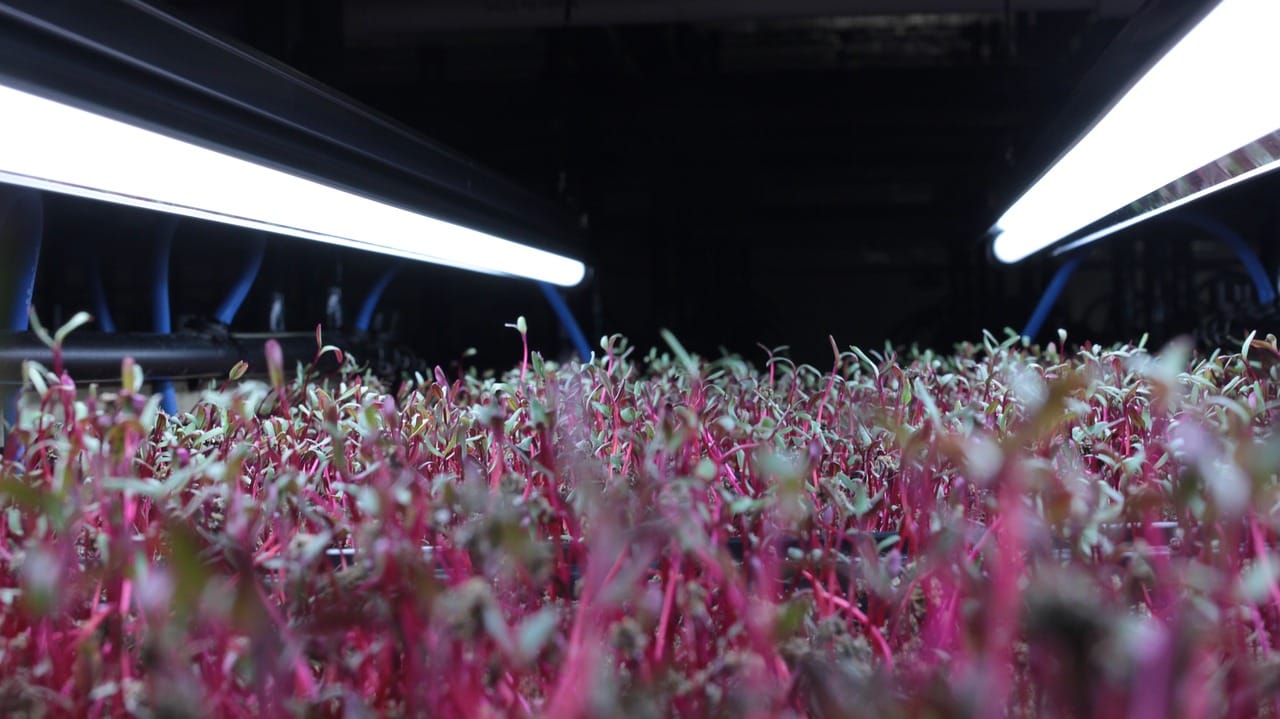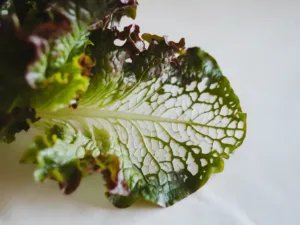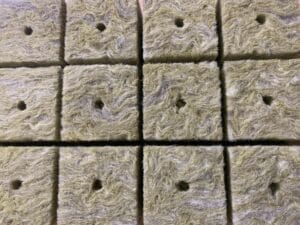Radish microgreens are the secret star of the hydroponics world. Not only are they incredibly easy to grow, but they also deliver a bountiful harvest full of flavor and nutrients within days. Compared to fully grown radishes, the microgreens have a more intense taste—spicy and slightly sharp, just what you need to give salads, sandwiches, and other dishes a powerful kick.
But that’s not all! Radish microgreens are true nutrient powerhouses. They are rich in vitamins like A, C, and K, as well as minerals like calcium and iron. They also contain valuable antioxidants that help your body fight free radicals. Thanks to their quick growth cycle and easy care, they are perfect for both beginners and experienced hydroponic gardeners alike. And the best part: you don’t need a traditional hydroponic system; you can grow them on special substrate mats!
Choosing Varieties: Which Radishes Are Suitable as Microgreens?
Choosing the right variety is the first step to a successful radish microgreens harvest. Not all radishes are the same, and some varieties are better suited for microgreens than others. Here are the best varieties to consider for your cultivation:
- Daikon (Radish): This variety has a long root and is known for its mild flavor. As a microgreen, Daikon develops a slight spiciness that is perfect for salads and smoothies.
- China Rose: This variety is particularly popular for its striking pink stems and leaves. It has a mild-spicy taste and grows quickly, making it ideal for microgreen cultivation.
- Sango Purple: With its deep purple stems and leaves, this variety is a real eye-catcher. It has a medium spiciness and adds color and flavor to your dishes.
- Rambo Radish: This variety has a similar taste to Sango Purple but slightly larger leaves. It is also very decorative and easy to grow.
- Red Arrow: Red Arrow is a popular choice for microgreens due to its crunchy, spicy flavor. It has vibrant green leaves and grows reliably and quickly.
The choice of variety depends on what you want to achieve—a mild spice or a strong sharpness, a sea of green leaves, or a colorful arrangement. Feel free to experiment with different varieties to find out which one you like best!
The Best Hydroponic System for Radish Microgreens
While many plants are grown in traditional hydroponic systems such as deep water culture or the NFT system (Nutrient Film Technique), radish microgreens require a different approach. Due to their rapid growth and the fact that they are harvested as a dense mat, they thrive best on special substrate mats.
Substrate mats provide an excellent foundation for microgreens. They keep the seeds moist and offer stability for the young roots. This allows for dense, even growth, which is difficult to achieve with traditional hydroponic systems. The mats are available in various materials, including hemp, coconut fiber, and jute, each offering its own benefits.
By using substrate mats, you can avoid complex pump systems. Instead, you simply moisten the mat regularly with a nutrient-rich solution. This approach is less technology-intensive and makes it especially easy to get started in the world of microgreens.
Growing Radish Microgreens: From Seed to Harvest
Growing radish microgreens is simple and rewarding, especially if you follow the process step by step. Here is a straightforward guide on how to grow your own radish microgreens at home:
- Prepare Seeds: Choose high-quality radish seeds that are specifically suitable for microgreens. It is important that the seeds are fresh and of good quality to ensure a high germination rate.
- Prepare Substrate Mat: Place your substrate mat, such as hemp or coconut fiber, in a shallow growing tray. Thoroughly moisten the mat with water or a diluted nutrient solution until it is evenly moist.
- Sowing: Spread the seeds densely and evenly on the moist substrate mat. Radish microgreens grow best in a dense stand, as they support each other and prevent toppling.
- Cover and Germinate: Lightly cover the seeds with a transparent cover or a second tray to ensure high humidity. After 2-3 days, the seeds should germinate and form small sprouts.
- Care: Remove the cover once the sprouts are about 1-2 cm tall. Ensure they receive adequate light—preferably direct sunlight or a strong LED grow light. Keep the substrate mat consistently moist but avoid waterlogging.
- Harvest: After about 7-10 days, your radish microgreens are ready for harvest. Cut them just above the substrate mat with a clean pair of scissors.
The Ideal Substrate: Which Mats Are Best?
Choosing the right substrate mat is crucial for the success of your radish microgreens cultivation. Different materials offer different advantages, and here is a comparison of the most common options:
| Substrate Mat | Advantages | Disadvantages |
|---|---|---|
| Hemp Mat | Sustainable, good water absorption, compostable | Can dry out faster than other mats |
| Coconut Fiber | Excellent water retention, reusable | Can be more expensive, needs to be well rinsed to remove salts |
| Jute Mat | Very stable, biodegradable | More expensive than other options, limited availability |
Each of these mats has its own pros and cons. Hemp mats are particularly eco-friendly and offer good water absorption but dry out faster. Coconut fiber, on the other hand, retains moisture well but can be more expensive and needs to be carefully rinsed. Jute mats are stable and biodegradable but also costly.
Optimal Conditions: Temperature, Light, and Humidity
To ensure the best growth of your radish microgreens, you need to pay attention to some important environmental factors:
- Temperature: The ideal temperature for radish microgreens is between 18 and 24°C. Too high temperatures can slow growth and increase the risk of mold.
- Light: Radish microgreens need plenty of light, about 12-16 hours a day. A strong LED grow light is ideal to ensure the best growth and promote a compact, robust plant.
- Humidity: A relative humidity of 40-60% is ideal. Too much moisture can lead to mold problems, while too little can dry out the sprouts.
PH and EC Levels: What You Need to Know
The right pH and electrical conductivity (EC) levels of the nutrient solution play an important role in the healthy growth of your radish microgreens. The pH should be between 5.5 and 6.5 to ensure optimal nutrient uptake. The EC level should be in the range of 1.0 to 1.5 mS/cm, as microgreens do not require as many nutrients as mature plants.
The Best Nutrients for Radish Microgreens
While radish microgreens do not require many nutrients, a good basic supply can promote their growth. A diluted nutrient solution specially developed for microgreens is ideal. Make sure the solution contains all the important macro and micronutrients such as nitrogen, potassium, and calcium.
Harvest Time: When and How to Harvest Radish Microgreens?
Harvesting radish microgreens is simple and quick. After about 7-10 days, when the sprouts are about 5-7 cm tall and the first true leaves are visible, the perfect time has come. Cut the microgreens just above the substrate mat with a clean pair of scissors. Wash the harvest thoroughly and dry it lightly before storing it in an airtight container in the refrigerator. This way, they stay fresh for up to a week.
Diseases and Pests: What Can Go Wrong?
Although radish microgreens are relatively easy to care for, there are some common problems that can occur:
- Mold: Can occur due to high humidity or insufficient ventilation. Good air circulation and controlled watering are crucial.
- Algae: These can form on the substrate mat if it receives too much light and moisture. Reduce light or moisture to solve the problem.
- Pests: Although rare, flies or aphids can occur. A fine insect net or natural pest control methods can help here.
Plant-Specific Tips for Success
If you want to get the most out of your radish microgreens, consider the following tips:
- Dense Sowing: Radish microgreens benefit from dense sowing. This promotes growth and prevents toppling.
- Regular Care: Make sure the substrate mat is always moist but not wet. Check daily to detect problems early.
- Lighting: Ensure your microgreens receive enough light. This promotes the development of strong, green leaves.
Start Your Own Radish Microgreens Cultivation!
Radish microgreens are a simple, quick, and nutrient-rich addition to any hydroponic garden. With the right varieties, substrate mats, and simple care, you can enjoy a bountiful harvest in just a few days. So, why not start today? Get your seeds and discover the wonderful world of microgreens!







